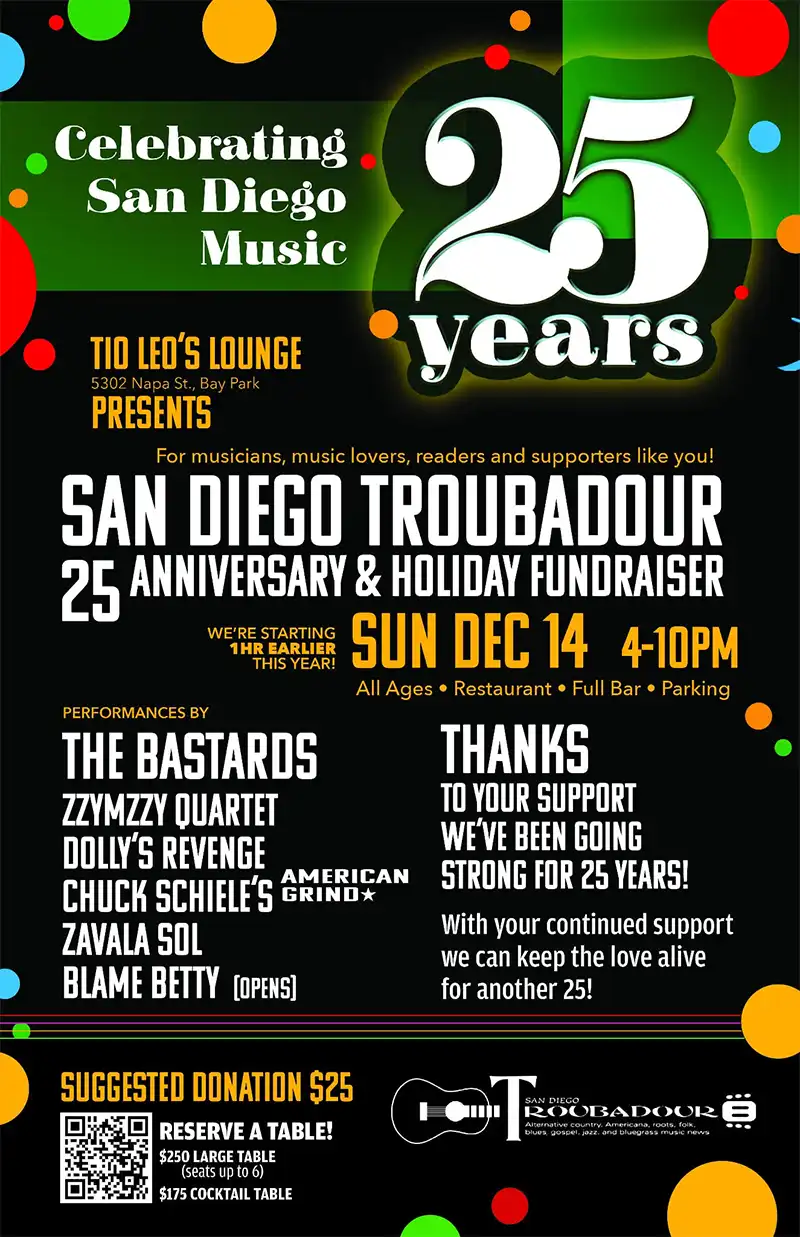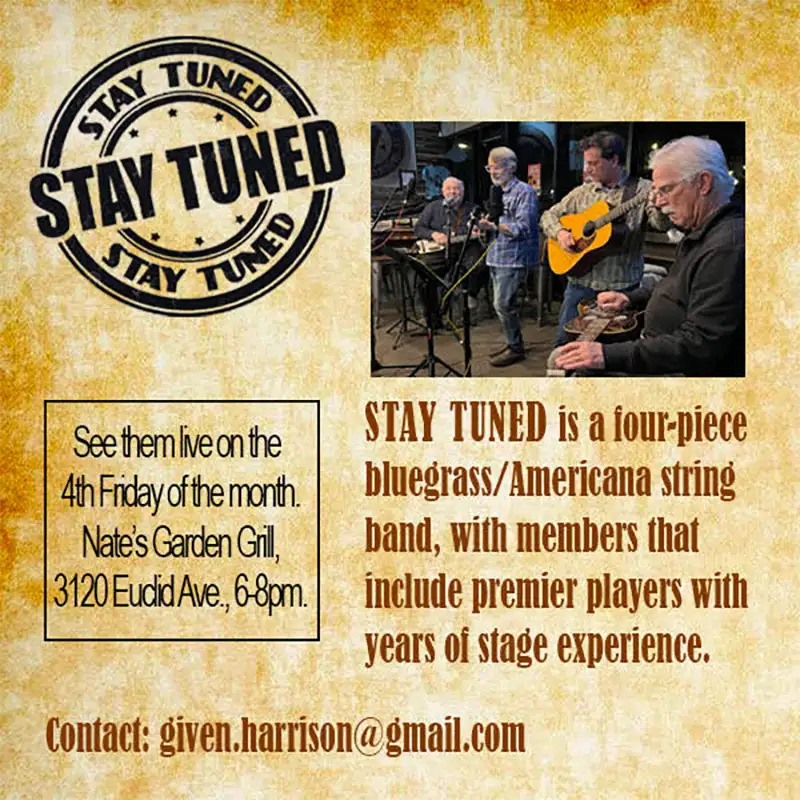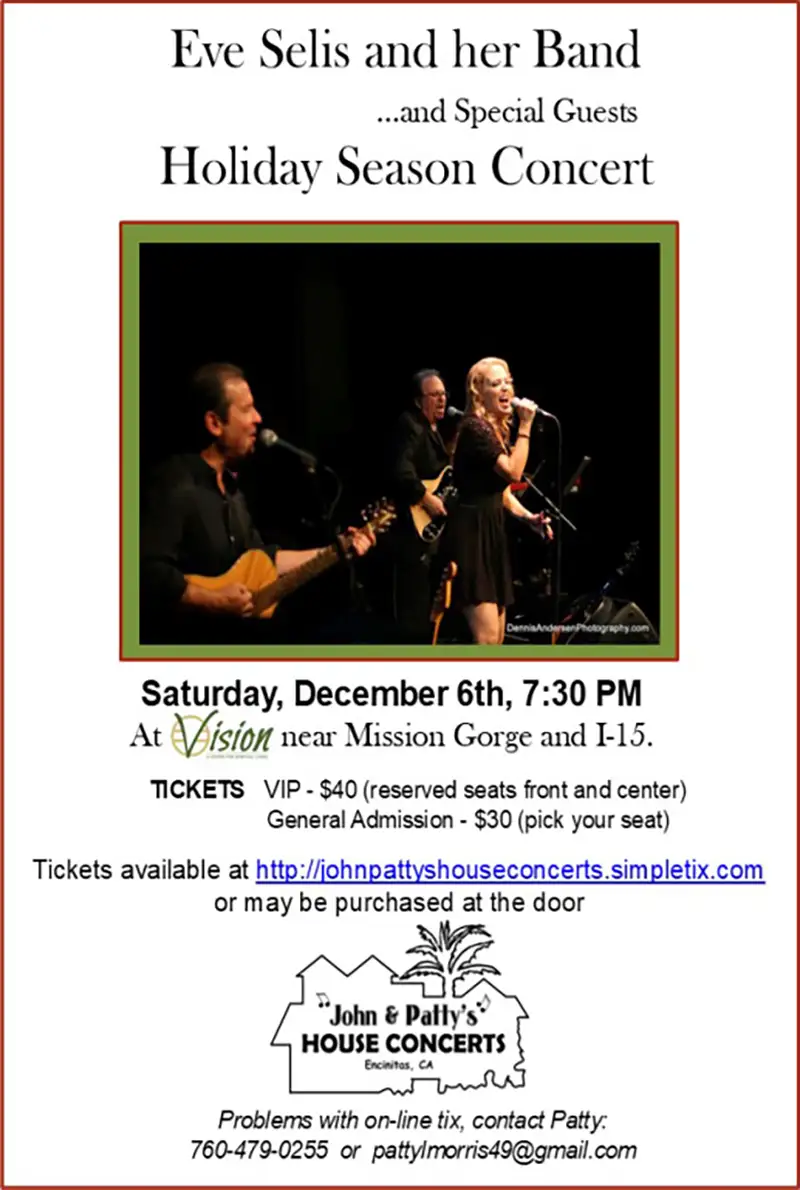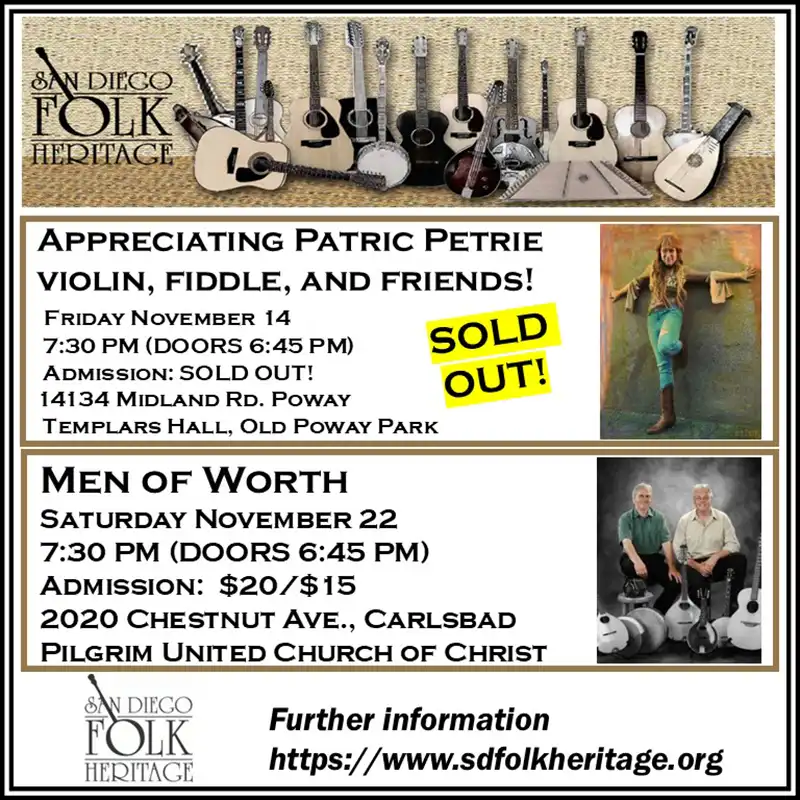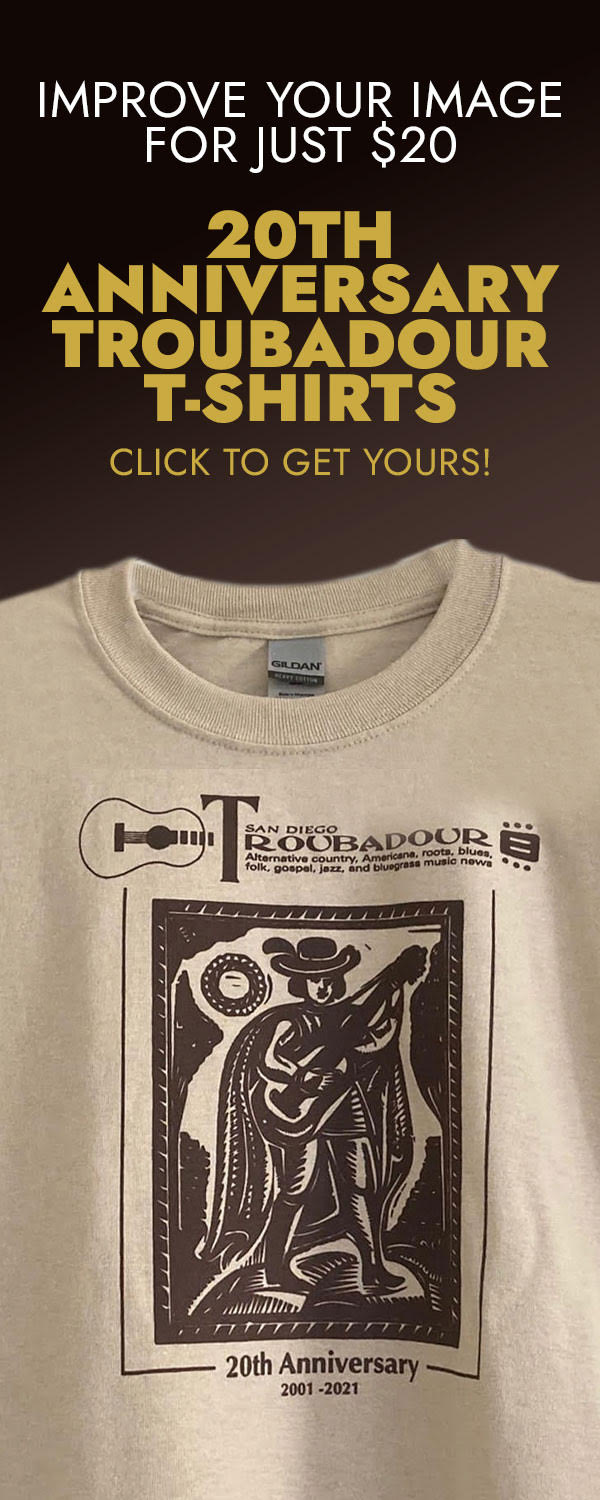SUE'S SPOTLIGHT: Women in Blues and Jazz
SUE’S SPOTLIGHT: Women in Jazz and Blues: Jeannie Cheatham • Big Mama Thornton • Sippie Wallace
One of the best concerts I ever attended was the PBS Special at the Belly Up Tavern in 1983, featuring Three Generations of the Blues, highlighting Sippie Wallace, Big Mama Thornton, and Jeannie Cheatham. Each of them, while well known by blues fans today perhaps didn’t always get the attention they should have. Big Mama and Sippie died not too long after the show, but Jeannie is still alive and actually lives in San Diego. The very cool thing about that concert, was how much they all were enjoying themselves.
Jeannie Cheatham, 1927-
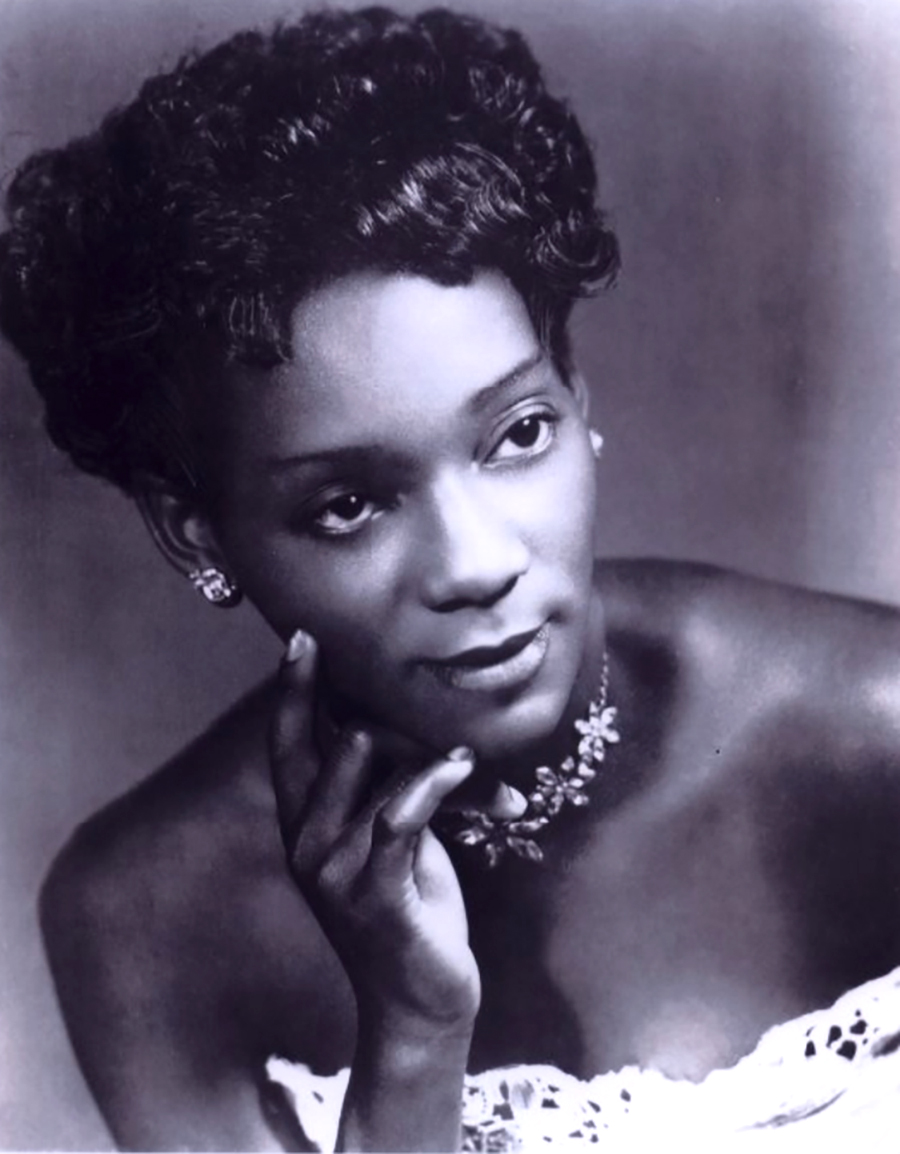
Jeannie Evans Cheatham, 1950s
Jeannie Cheatham has been lauded by the Troubadour multiple times, the latest being an article by Jim Trageser in August of 2022 (https://sandiegotroubadour.com/happy-birthday-jeannie-jeannie-cheatham-celebrates-her-95th-birthday-this-month/) in honor of her 95th birthday; she will be 98 this year. Ever since she and her husband, Jimmy, arrived in San Diego in 1978, they have been a cultural force. I am sure it happened wherever they happened to be living. They had both been teachers at the University of Wisconsin, in Madison, when Jimmy was hired by UCSD to direct the school’s African-American and jazz performance program. Shortly after that, Jeannie began performing in San Diego.
I saw her for the first time upstairs at the Sheraton Hotel, on Harbor Island, playing with a trio. I remember her drummer was Patty Padden, who also played with her at a 1983 concert at the Belly Up. Jeannie was friendly and delightful and a wonderful piano player. In the Three Generations of Blues concerts, she was the youngest.
Sweet Baby Blues Band on the Johnny Carson show, 1988.
In 1984, she and her “roommate” Jimmy started their band, the Sweet Baby Blues Band. While both of them had met and played with the most important jazz musicians of their time, this was probably their most significant endeavor. Comprised of well-known jazz musicians from LA and San Diego, they played Kansas City-style arrangements that Jimmy wrote. They won many awards in San Diego and all over the world, including the Grand Prix Du Disque de Jazz, in France, for their recording Sweet Baby Blues in 1985. They also appeared on Johnny Carson’s show in 1988, with San Diego’s Jimmy Noone Jr. on sax and Clora Bryant on trumpet, among others. For many years, while Jimmy was teaching, Jeannie held packed jam sessions at the Bahia Hotel, with horn players and students from UCSD. They were both very generous with their time and energy.
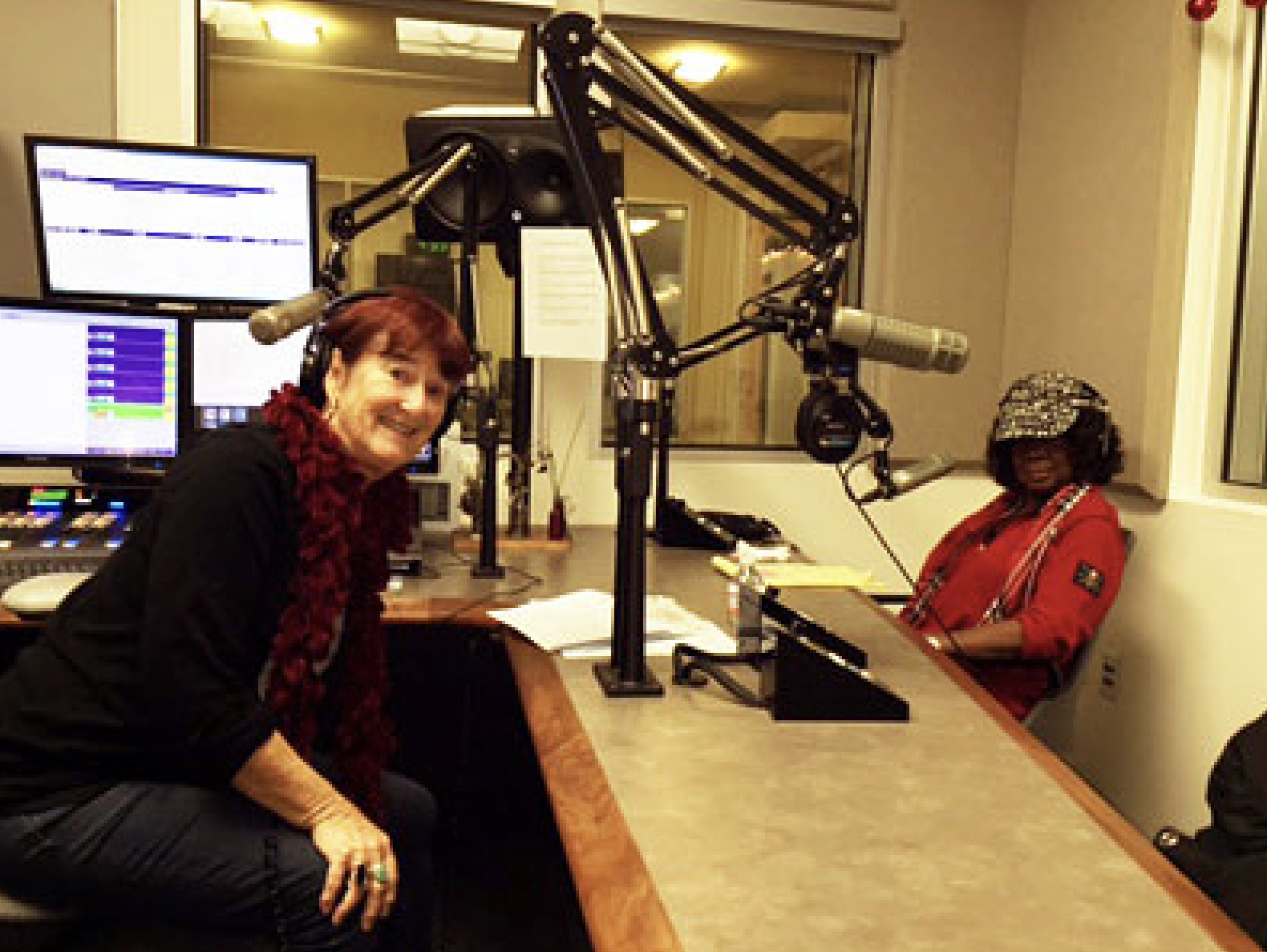
Sue Palmer interviews Jeannie Cheatham on her Jazz88 radio show. (click here: https://www.youtube.com/watch?v=p9ZI9U2fRRA to view the interview)
I saw them whenever they played here in San Diego, and I was lucky enough to get an interview with Jeannie on my radio show on KSDS, Jazz 88.3 in 2015. She was inducted into the San Diego Music Hall of Fame in 2022 and I was honored to play for that event, with my singer Liz Ajuzie. Perhaps my most interesting encounter with Jeannie was an event promoting her autobiography, Meet Me with Your Black Drawers On, in 2006. The event took place at the Geisel Library, at UCSD, arranged by Troubadour columnist and Teeny Tiny Piano producer Scott Paulson. It was part spoken word and part music. She had several of us read chapters from her new book. I was lucky to get to read the chapter that recalled the time she was innocently caught in a police raid and spent the night in a jail cell with prostitutes. The book release event included some well-known local musicians, including late guitarist Bob Boss, and I got to sit in with the band and Jeannie also. It is a great book and snapshot of a jazz musician who has had a full and wonderful career and life.
Big Mama Thornton, 1926-1984
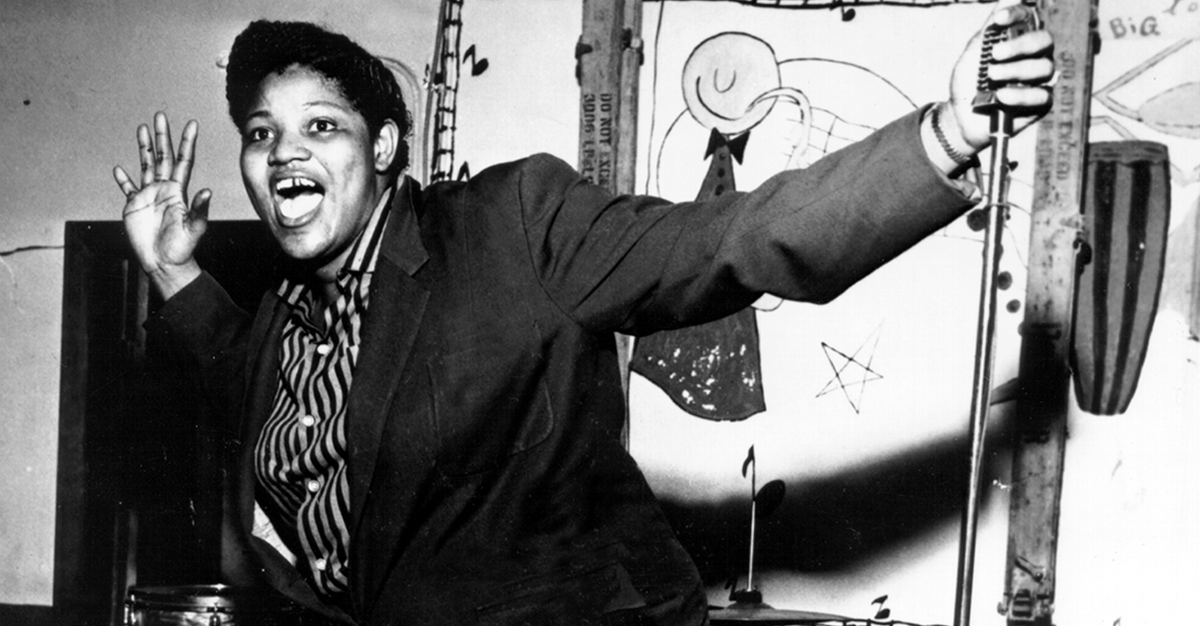
Big Mama Thornton
Even though Big Mama Thornton is just a year older than Jeannie Cheatham, their styles are very different. Big Mama is more rooted in Bessie Smith and Jeannie in Count Basie.
Willie Mae Thornton was born in 1926 in Alabama. Her mother died when she was 13, and her education was cut short because of that. Her interest in music, specifically Bessie Smith, sustained her. She began going on the road on the early ’40s Chitlin Circuit and honing her skills as a singer, comedian, dancer, harmonica player, and drummer. She got a record deal with Peacock Records in Texas and began going on the road with Johnny Otis. In 1950, he introduced her to Jerry Leiber and Mike Stoller, who wrote “Hound Dog” for her. In 1953, her version of “Hound Dog” was #1 on the Billboard R&B Chart for seven weeks, and she received $500 for it. Elvis recorded it in 1956.
She got the moniker Big Mama based on her stature (she was nearly 6 ft and 200 lbs), her big personality, and her big voice. I saw her once at the iconic Silverado Ballroom, when she was still big and wearing a dress. Later in life she took to dressing like her male blues counterpoints, revealing a defiant attitude toward the rules of female comportment. When she appeared at the Belly Up in 1983, despite the fact that she was suffering from liver failure and essentially dying, she put on a fun show and interacted with Sippie and Jeannie with ease.
Thornton with Buddy Guy’s band, singing “Ball and Chain.”
Big Mama moved to the Bay Area in the ’60s to try her luck. Janis Joplin heard her and asked for her permission to sing “Ball and Chain.” Hopefully, she made more money on that song, as she wrote that one herself. She died at the age of 57 and was inducted into the Rock ‘n’ Roll Hall of Fame in the musical influence category.
Sippie Wallace, 1898-1986

Sippie Wallace

Wallace in her later years.
Sippie Wallace is the oldest of these three generations and definitely out of the Roaring ’20s. Her style and stage presence recall other stars of that time, including Ma Rainey, Ida Cox, Bessie Smith, Alberta Hunter, and Sippie could hold her own with any of them. Eventually, she followed her musical brother to Chicago and worked her way into the bustling jazz scene of the time. She scored a record deal with Okeh Records, in 1923, and became an early blues star. She recorded over 40 songs then.
In the ’30s, she left show business and became a church organist, singer, and choir director in Detroit and played secular music sporadically until the ’60s. Her longtime friend, Victoria Spivey, a major character herself, coaxed her out of retirement in 1966. She ended up on the folk and blues festivals all over the world and eventually came to the attention of Bonnie Raitt. Bonnie was inspired by Sippie to play the blues, and they eventually toured together in the ’70s and ’80s. She and Bonnie played her signature song together on the David Letterman Show in 1982. Sippie played the Memphis Folk Festival in 1966 and 1967, the Chicago and Ann Arbor Festivals among others, and appeared at Lincoln Center in 1977. In March 1986, at the Burghausen Jazz Fest in Germany, Wallace suffered a severe stroke, returned to Detroit, and died on her 88th birthday.
I consider myself lucky to have heard all three of these blues greats in one place. Thank you to PBS and the Belly Up Tavern.


